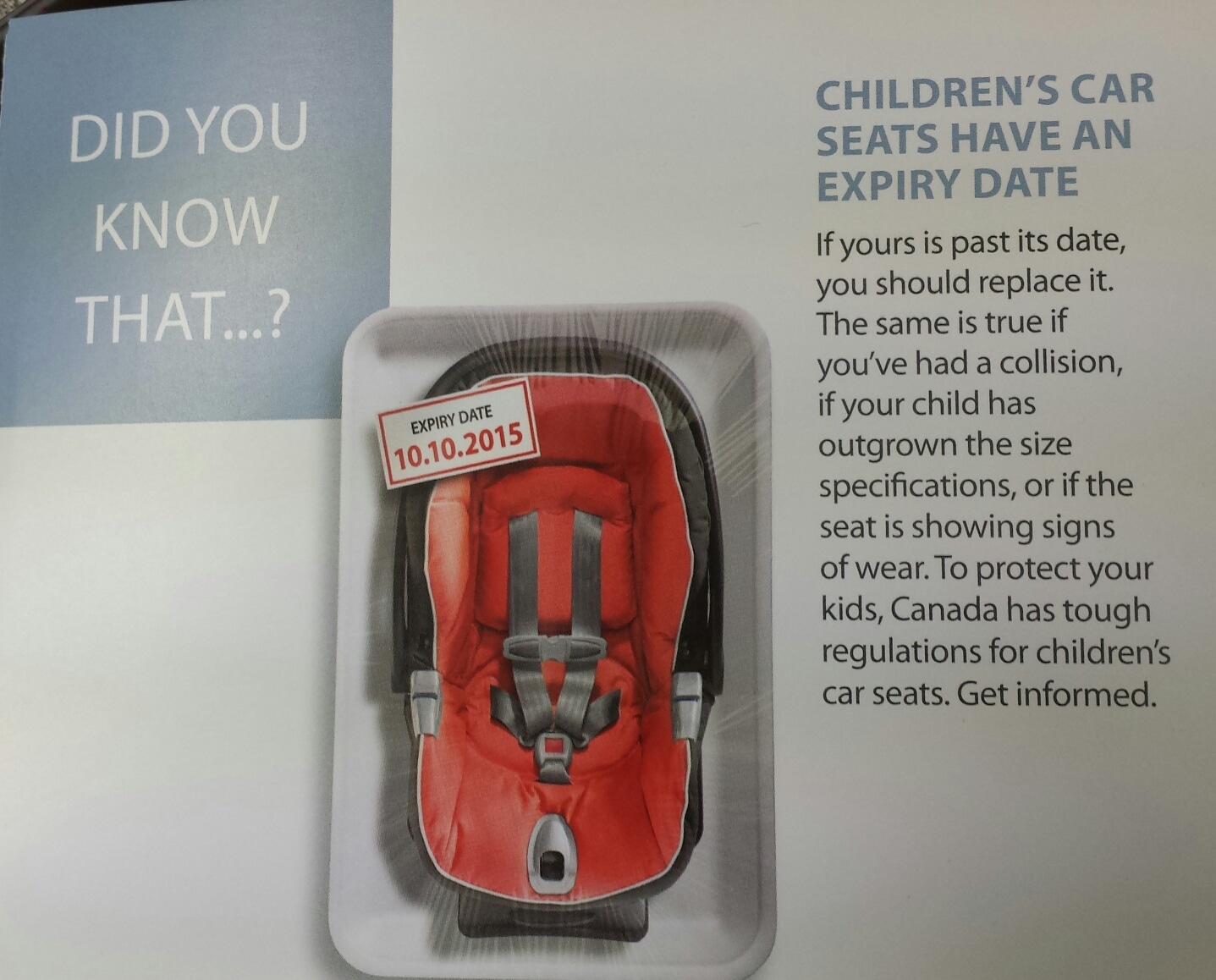Have you checked the expiry date on your child’s car seat? And why is there an expiry date on car seats?
Manufacturers give an expiry or useful life date because over time:
- frequent use and exposure to sunlight can damage and weaken plastic
- safe-use labels on the products fade or become hard to read
- instruction manuals have likely been lost
- food, cleaners, drinks and other materials that have been spilled or used on webbing, buckles, adjusters and other parts may prevent them from working safely
- the history or condition of the car seat or booster seat becomes hard to check (was it in a crash, was it stored in a place or in a way that caused damage to parts, etc.?)
- safety regulations and standards may have changed, so safer products may now be on the market
- second or subsequent owners may not get product safety recall notices if problems arise
Parents and caregivers should not use children’s car seats and booster seats past their expiry or useful life date. Beyond this date, the car seat should be permanently discarded rather than donated to a charitable organization, second hand store, or given to friends or relatives.
If you own a car seat or booster seat made before January 1, 2012, under Health Canada’s Canada Consumer Product Safety Act, you may not be able to advertise, sell, or give it away because it may not meet the latest requirements set out by Health Canada.”
For more information:
Transport Canada’s Consumer Information Notice
Vancouver Island Car Seat Technicians
Last updated: March 2018

